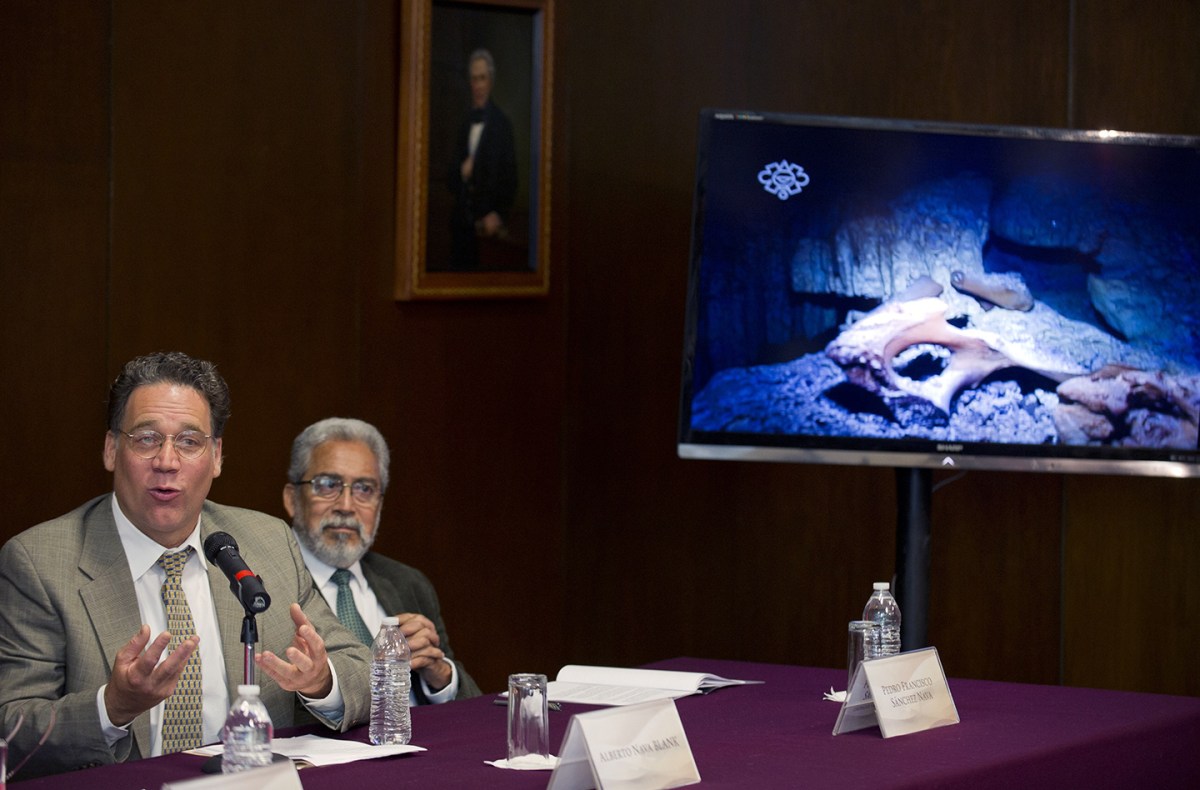A stolen skeleton that was discovered in an underwater Mexican cave in 2010 may be one of the oldest-known human remains in the Americas, according to Nature.
The skeleton, dubbed “Young Man of Chan Hol II,” was looted from an underwater cave on the Yucatán Peninsula in 2012. In a new study published in the journal PLOS One, the archaeologists say the skeleton dates back more than 13,000 years, making it one of the oldest-known human remains on the continent, writes Smithsonian.
Cave divers first discovered the remains in Feb. 2012 and posted photos of a nearly complete skull and other whole bones to social media.
Archaeologists Arturo González González at the Desert Museum in Saltillo, Mexico, and Jerónimo Avilés Olguín at the Institute of American Prehistory in Cancún, took note of the photos, but by the time they visited the cave in late March, the remains were gone, save for about 150 bone fragments and a pelvic bone that had been subsumed by a stalagmite growing up from the cave floor, reports Nature.
Based on three bones, the researchers now think the skeleton belongs to a young man who died in the cave when it was above ground, when sea levels were lower.
Nature writes that few other human remains from the Americas are older than 13,000 years. A skeleton of a teenage girl found in a different Yucatán cave was carbon-dated to more than 12,000 years. In yet another ave, this one near Tulúm, was found to be about 13,500 years old, via radiocarbon dating. There is significant archaeological proof that humans colonized the Americas before 14,000 years ago, writes Nature, but old remains are precious.
Getting DNA from what remains of the Chan Hol skeleton will be hard/ Stinnesbeck told Nature he hopes to find DNA in the few teeth not taken by the thieves.
The thieves themselves remain a mystery.
“What would you want with a skeleton? Would you take it home?” Stinnesbeck asked, according to Nature. “If they had known it was very old, maybe just to have a souvenir, to have something special.”
This article appeared in an InsideHook newsletter. Sign up for free to get more on travel, wellness, style, drinking, and culture.




















